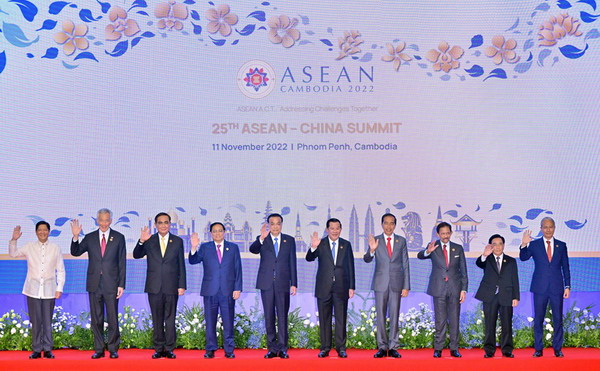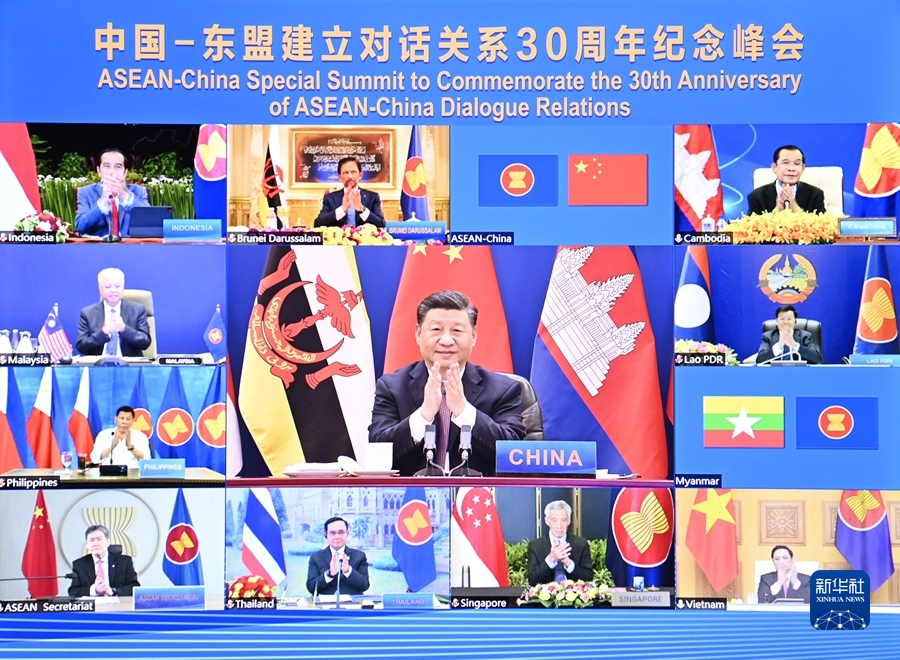
Last December, I arrived in Jakarta as China’s Ambassador to ASEAN. Living in this bustling cosmopolitan allows me to personally witness the vigorous economic development of ASEAN countries, enjoy the practical benefits that China-ASEAN economic and trade cooperation brings to the general public, and thus become more convinced that the economic development and cooperation in the region still contain great potential.
In the face of the once-in-a-century pandemic that lasted more than three years, China and ASEAN have not only stood together in solidarity to fight COVID-19, but have also driven their respective economies to show resilience and strength. ASEAN countries have seen rapid trade growth, continued recovery in consumption, and burgeoning digital economy, with overall economic growth expected to exceed 5% in 2022. China’s economy has grown at an average rate of 4.8% over the past three years, and the consumer price index has remained at a low 2% increase. China-ASEAN bilateral trade even bucked the negative trend caused by the pandemic, jumping from US$641.5 billion in 2019 to US$975.3 billion in 2022. Our two sides have been each other’s largest trading partner for many years.
With countries overcoming the pandemic and adjusting or lifting their pandemic prevention and control measures accordingly, the prospects for China-ASEAN economic and trade cooperation have become more promising. According to international investment banks, China’s domestic demand is expected to grow by 5% this year, driving the growth rate of some Asia-Pacific economies by about 0.4 percentage points. In particular, the accelerated recovery of China’s outbound tourism and other services trade will certainly inject greater momentum for ASEAN countries to boost their economies.
Seizing development opportunities, releasing cooperation potential, achieving rapid recovery, and promoting long-term development are the common aspirations of China and ASEAN countries at present. In this context, the first round consultations of Version 3.0 China-ASEAN Free Trade Area (ACFTA) negotiations has been officially launched in early February, kicking off a new round of economic and trade cooperation upgrade.
We expect ACFTA 3.0 to better benefit the people of both sides. At present, more than 90% of commodities (about 7,000 kinds) already enjoy zero tariff treatment between China and ASEAN, effectively enhancing business efficiency, social employment and people’s income. ACFTA 3.0 will further reduce tariffs, regulate measures in fields of customs, inspection, and quarantine, and enhance trade and investment liberalization and facilitation. It will also better protect the rights and interests of consumers on both sides, promote the development of micro, small and medium enterprises (MSMEs), and create more jobs. The more efficient and smooth flow of economic factors within the region will eventually create a high-quality life that each of us can truly enjoy.
We expect ACFTA 3.0 to give a strong impetus to regional high-quality development. ACFTA 3.0 is committed to achieving a more inclusive, modern, comprehensive and win-win development, so as to better respond to the new needs and trends of China and ASEAN countries in pursuing industrial upgrading and high-quality development, especially the digital economy and green transformation. This is conducive to fostering new drivers of economic growth, and will also enhance deeper integration of regional industrial and supply chains, optimize the layout of production networks, and enhance resilience against risks. In this process, China will actively provide technical and capacity building support to ASEAN countries to achieve common high-quality development.
We also expect ACFTA 3.0 to inject momentum and confidence into building an open world economy. The launch of ACFTA 3.0 negotiations demonstrates China’s determination to promote high-level opening-up and shows that under the current complex regional and international situation, China and ASEAN have jointly opted for openness and freedom rather than a closed-door and exclusive approach, mutually beneficial cooperation rather than a beggar-thy-neighbor approach, and deeper integration rather than decoupling or disrupting supply chains. ACFTA 3.0 will be complementary and mutually reinforcing with the Regional Comprehensive Economic Partnership (RCEP) Agreement and other intra-regional economic and trade cooperation mechanisms to promote the region as an open and inclusive epicentrum of growth.
The 20th National Congress of the Communist Party of China (CPC) pointed out that China pursues a mutually beneficial strategy of opening up. It strives to create new opportunities for the world with its own development and to contribute its share to building an open global economy that delivers greater benefits to all peoples. I look forward to witnessing the early conclusion of negotiations and implementation of ACFTA 3.0, and believe it will be an excellent example of building a closer China-ASEAN community with a shared future, providing more opportunities for China and ASEAN, for the region, and for the world.











